I assured him that he was quite welcome here since he dines on insects, and extolled the virtues of a mosquito course since we have a plethora of them that love to bite me. Snakes and birds find anoles tasty and their defense is to ditch their tails which continue to wiggle after detachment. The predator is left with the tail and the anole escapes.
Friday, April 26, 2019
A Garden Visitor
I spotted a visitor in the sunny garden this morning, a baby anole, from head to tail no longer than my thumb. Since anoles change color for camouflage like chameleons people often call them chameleons, but they’re not. 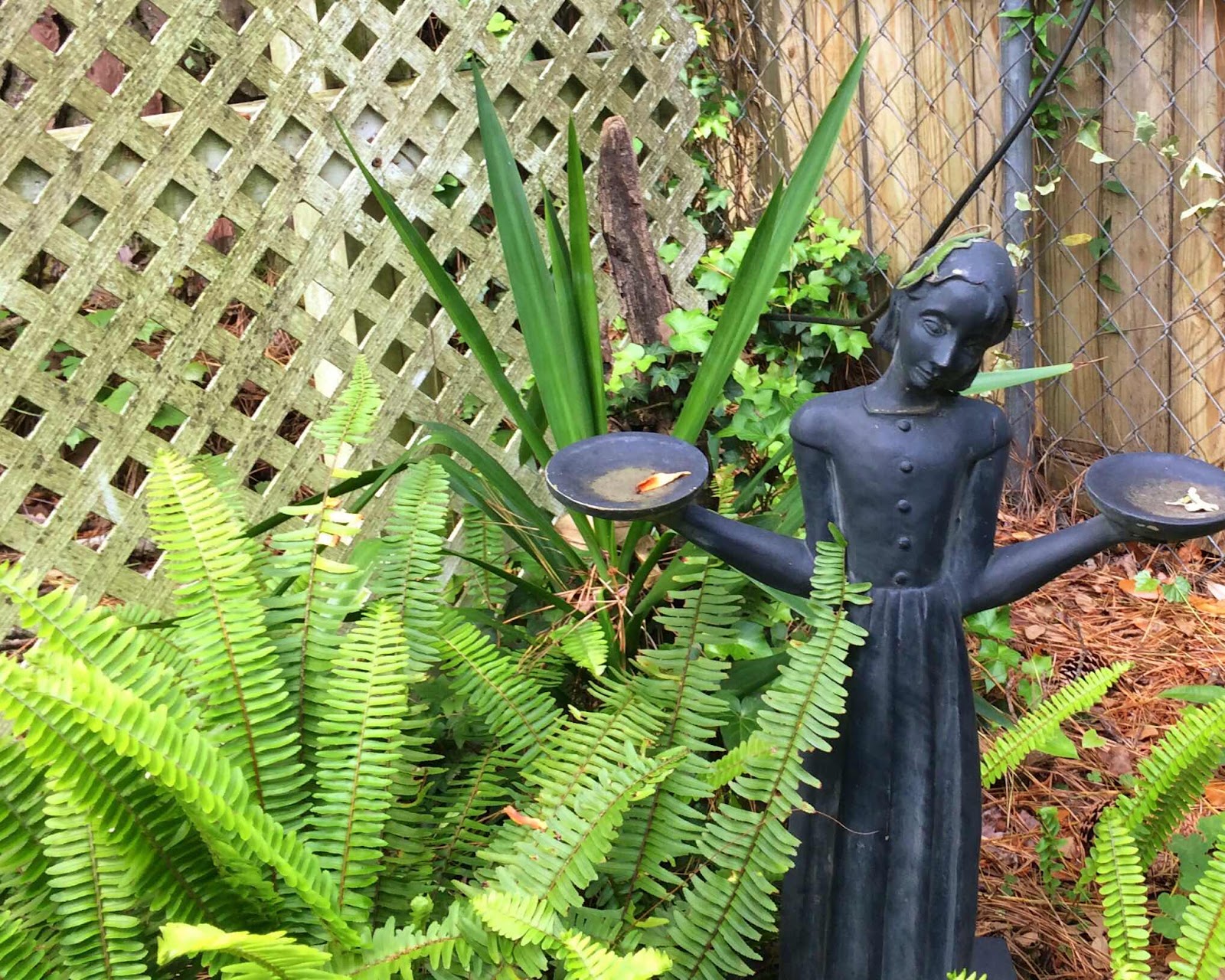


I assured him that he was quite welcome here since he dines on insects, and extolled the virtues of a mosquito course since we have a plethora of them that love to bite me. Snakes and birds find anoles tasty and their defense is to ditch their tails which continue to wiggle after detachment. The predator is left with the tail and the anole escapes.
I assured him that he was quite welcome here since he dines on insects, and extolled the virtues of a mosquito course since we have a plethora of them that love to bite me. Snakes and birds find anoles tasty and their defense is to ditch their tails which continue to wiggle after detachment. The predator is left with the tail and the anole escapes.
Tuesday, April 23, 2019
Just a Another Little Abandoned Church
On a recent drive to look for a campsite, we discovered the old Halfway Creek Methodist Church on one of the backroads in the Francis Marion National Forest near Shulerville, SC. 
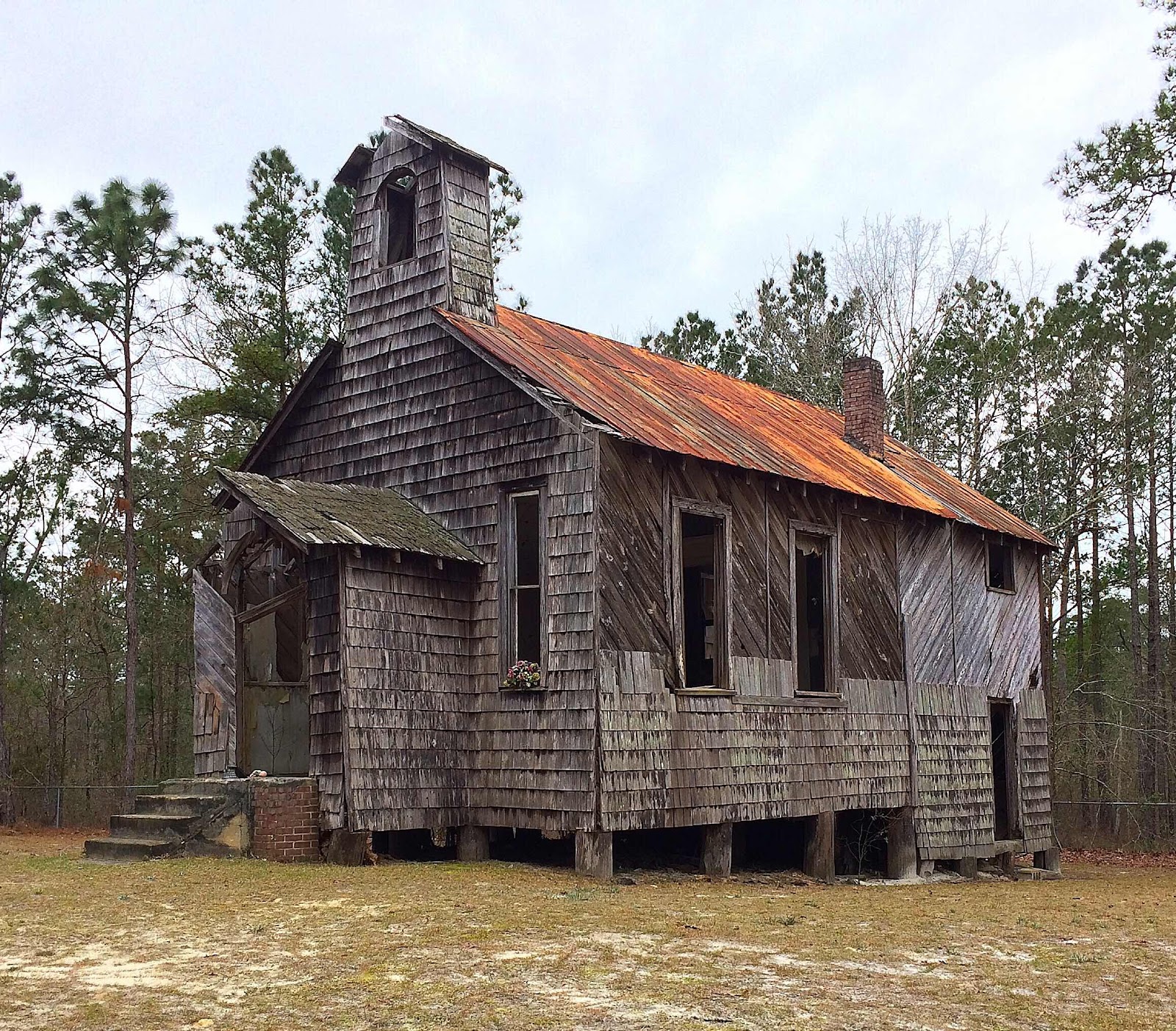
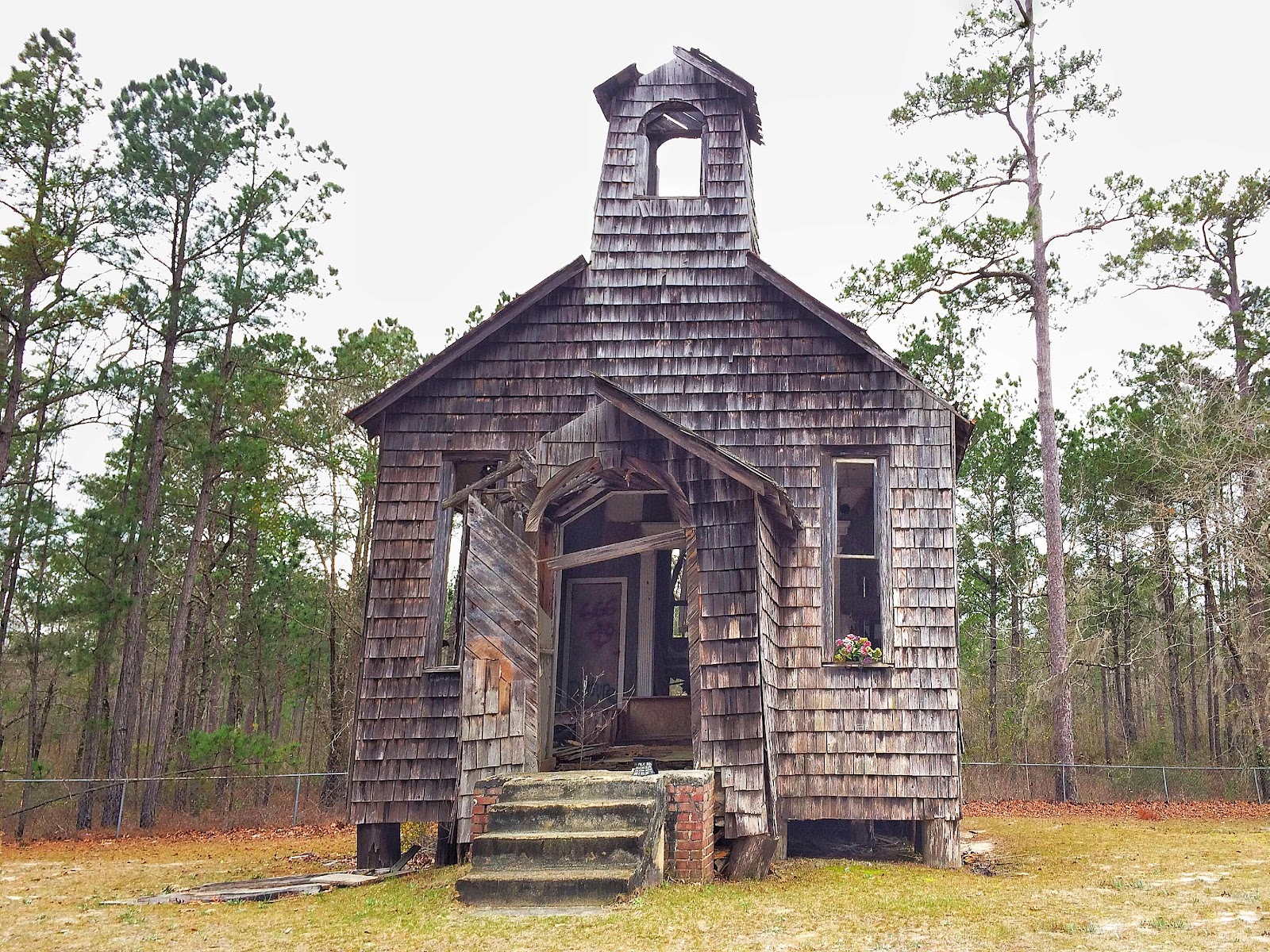


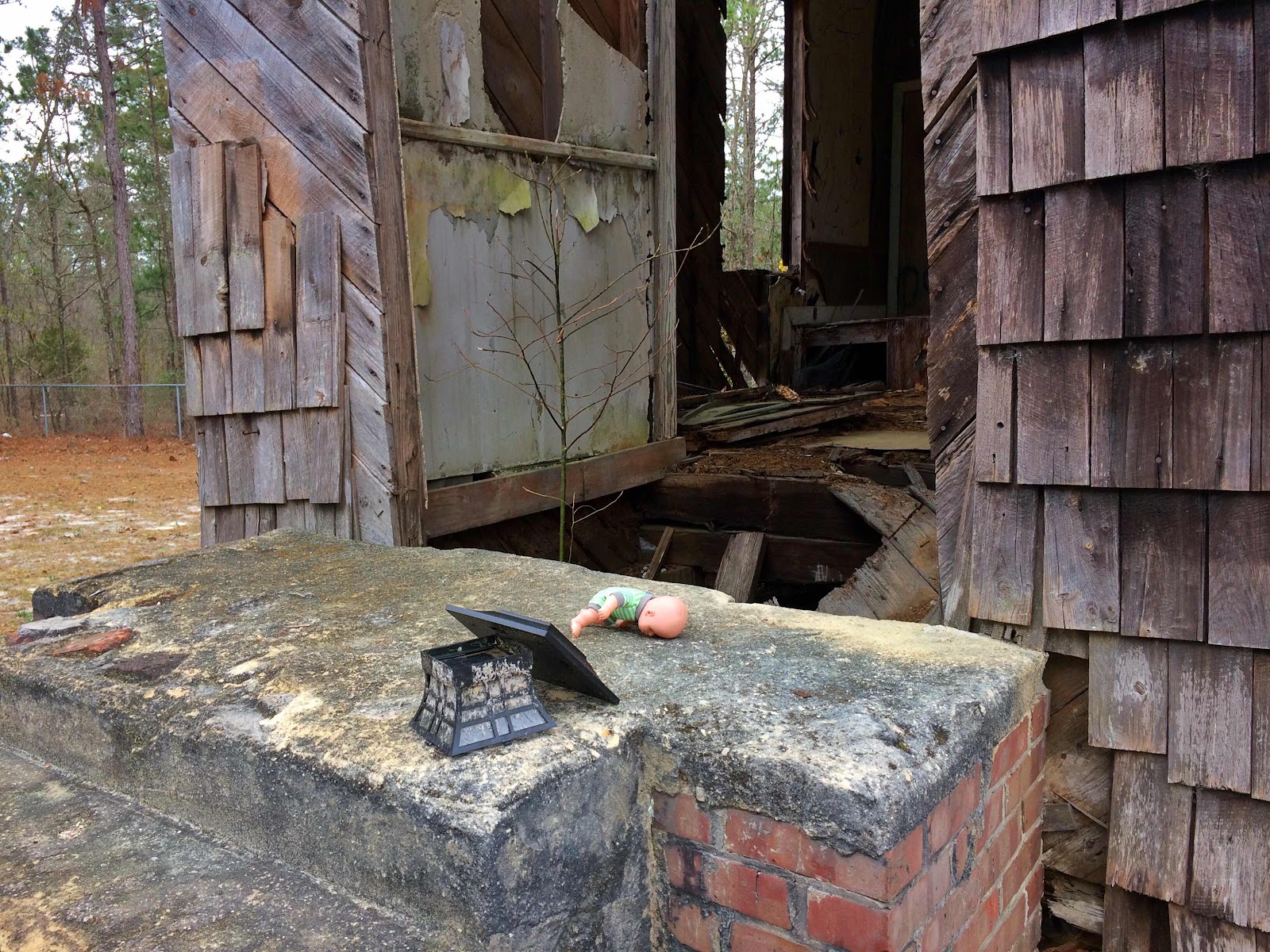
The original church was log, built in 1828 and serviced by a circuit-riding preacher who took care of seven or eight other congregations as well.
A school was located near the church and a little rural community flourished around it until the Civil War when it was abandoned for lack of members.
The church reopened in 1878 and went through several faith identities in the next 100 years, including Baptist, Presbyterian, and finally Pentecostal Holiness.
In 1941 the current building replaced the old and services continued into the 1970s.
All of the interior furnishings and the floor have fallen through to the ground below and someone has placed a fading bouquet of plastic flowers on the window sill.
A single jessamine vine leans against an exterior wall, a brave touch of cheerful yellow in the spring.
The Halfway Creek Church would have been the site of milestone events in the lives of its members over the years, their most important, life-altering occasions — the weddings and christenings, the baptisms and funerals.
All are long forgotten now. Like so many churches of the rural South, this one’s history isn’t important anymore, not even to the descendants of those who lived and died nearby. I could find almost no information about it whatsoever.
No one left to care for it, it slowly is returning to the Earth, like the bones in its graveyard nearby.
Friday, April 19, 2019
Southern Cookin’
We love funky old restaurants and this one is just down the road from us, hunkered among the pines of the Francis Marion National Forest. It is a humble little cement block building on the highway, but you can’t miss it — it’s painted the brightest sunny yellow you ever saw with hand-carved sun rays on the old-fashioned double screen doors, usually open to catch a breeze.
The McClellanville Diner opens early for breakfast and the parking lot stays full until it closes right after lunch. It’s been pretty much the same for 17 years, offering Southern cooking to travelers, families after church, fishermen off the boats, and a few regulars who work on crossword puzzles, visit with each other at the big community table, and hardly miss a day.
The kitchen is tiny, the decor folksy/southern eclectic kitsch alongside framed ocean-themed art, perhaps by someone’s grandchild. The walls are faded green, the linoleum floors well-worn, the refrigerated showcase in service since the 1970s.
The help-yourself pop cooler might well have been around since the 1950s.
The printed menu is a well-worn page in a plastic sleeve but you won’t need it; the good stuff is handprinted on the chalkboard each day — locally-caught seafood and traditional Carolina dishes like shrimp and grits, she-crab soup, fried or baked chicken, country-fried steak, collard greens, butter beans, red rice, oysters, sausage gravy, mac & cheese.
I tell you, a bowl of their she-crab soup and a side of the best-anywhere melt-in-your-mouth collards is pure heaven.
If you still have room, there are usually a couple just-baked desserts available like coconut, lemon, or chocolate strawberry mousse cake or sweet potato pie if you get there early enough.
Really, who could resist this??
There is one thing that earned the diner a negative review on Yelp. That is the restroom, um, situation. The reviewer was obviously from Somewhere Else because this is not that uncommon here.
The rest rooms are entered from outside the building and it looks like they have upgraded the facilities recently maybe. Or they’re keeping some spares handy in case of emergency!
And here’s a little Southern Cookin’ music to brighten your day.
Wednesday, April 10, 2019
A Bloomin’ Catch-Up
So much to do in the spring before it gets hot, and living seems to have taken precedence over blogging lately. Here’s a little catch-up.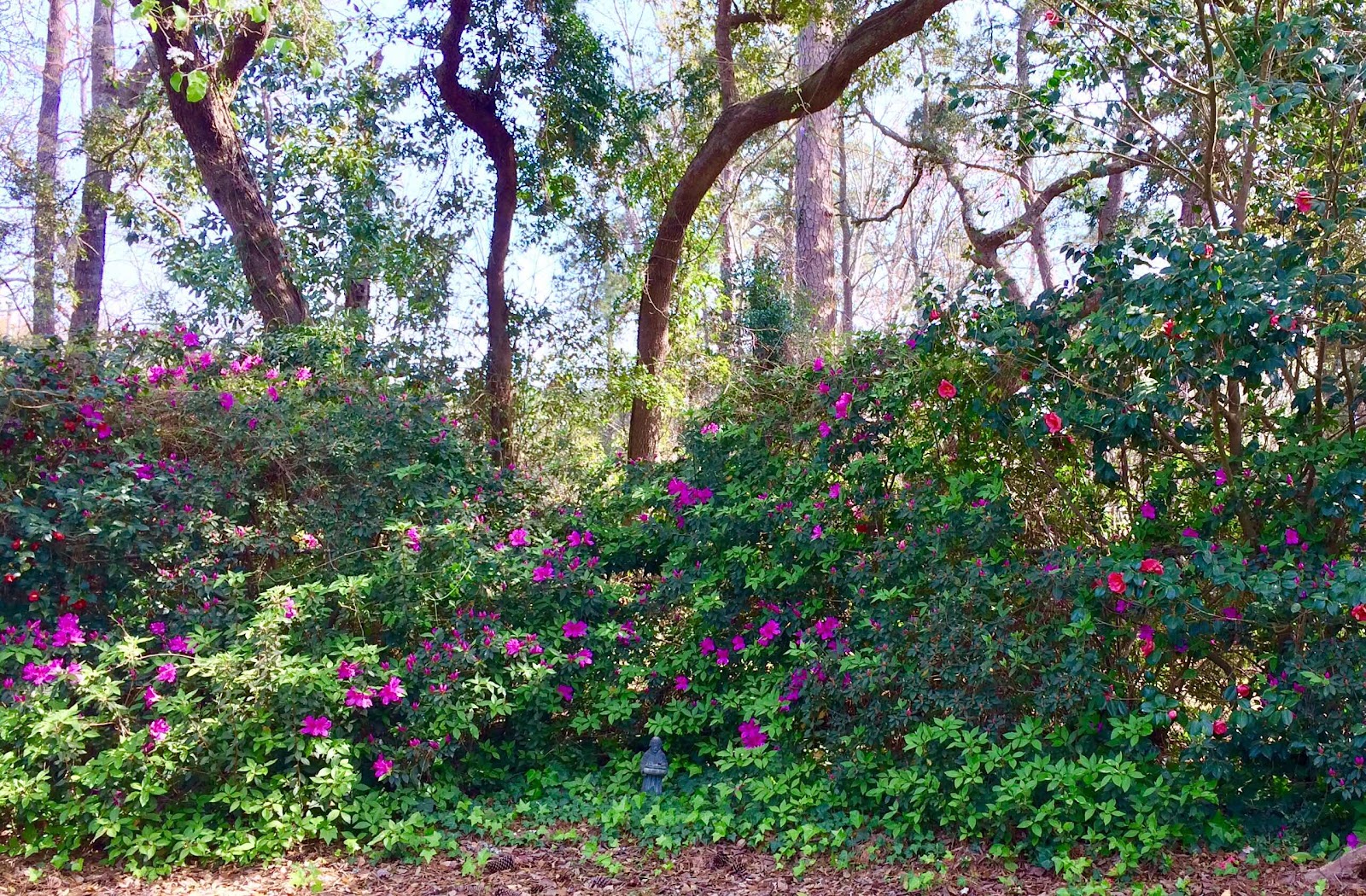
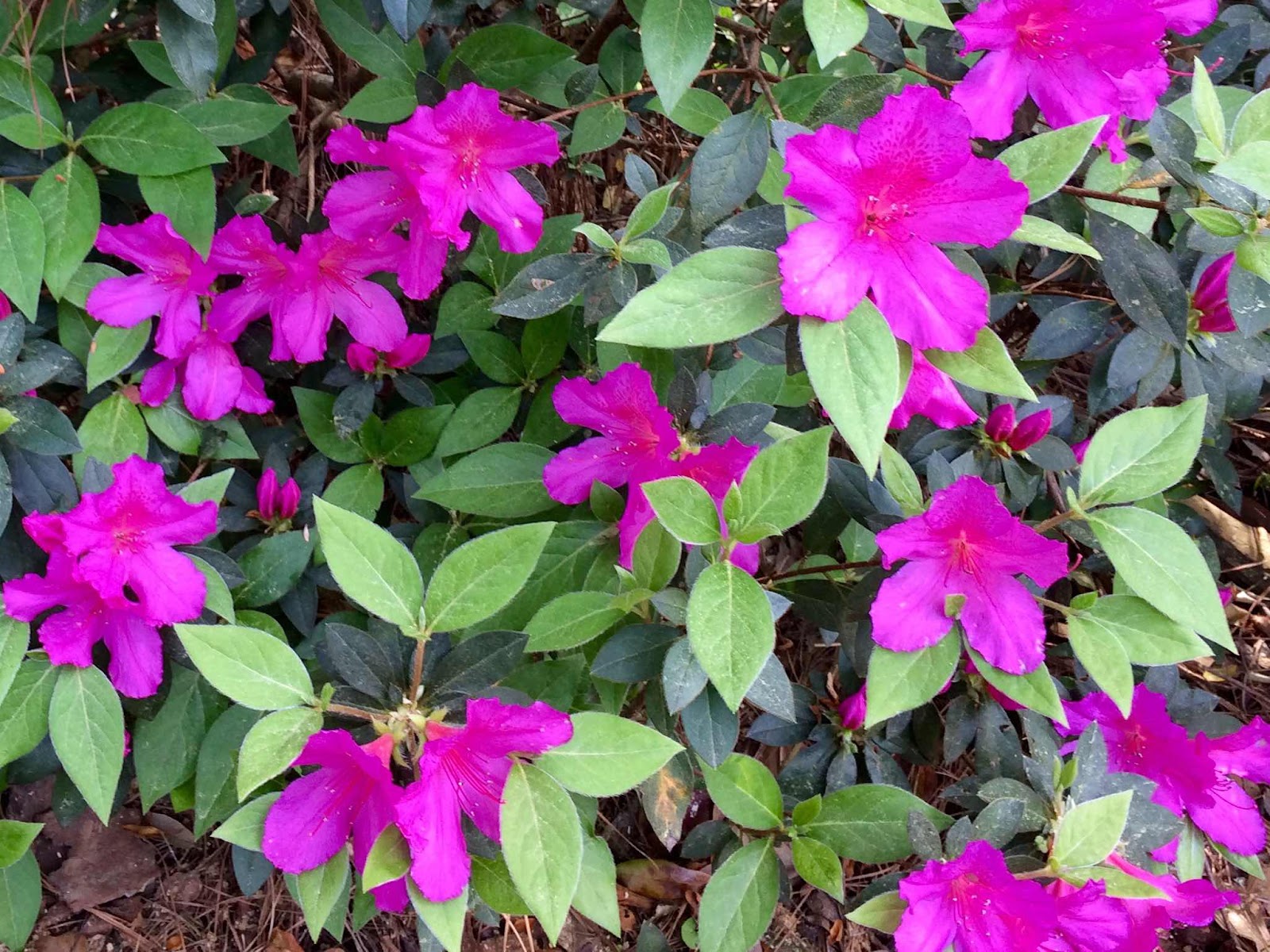
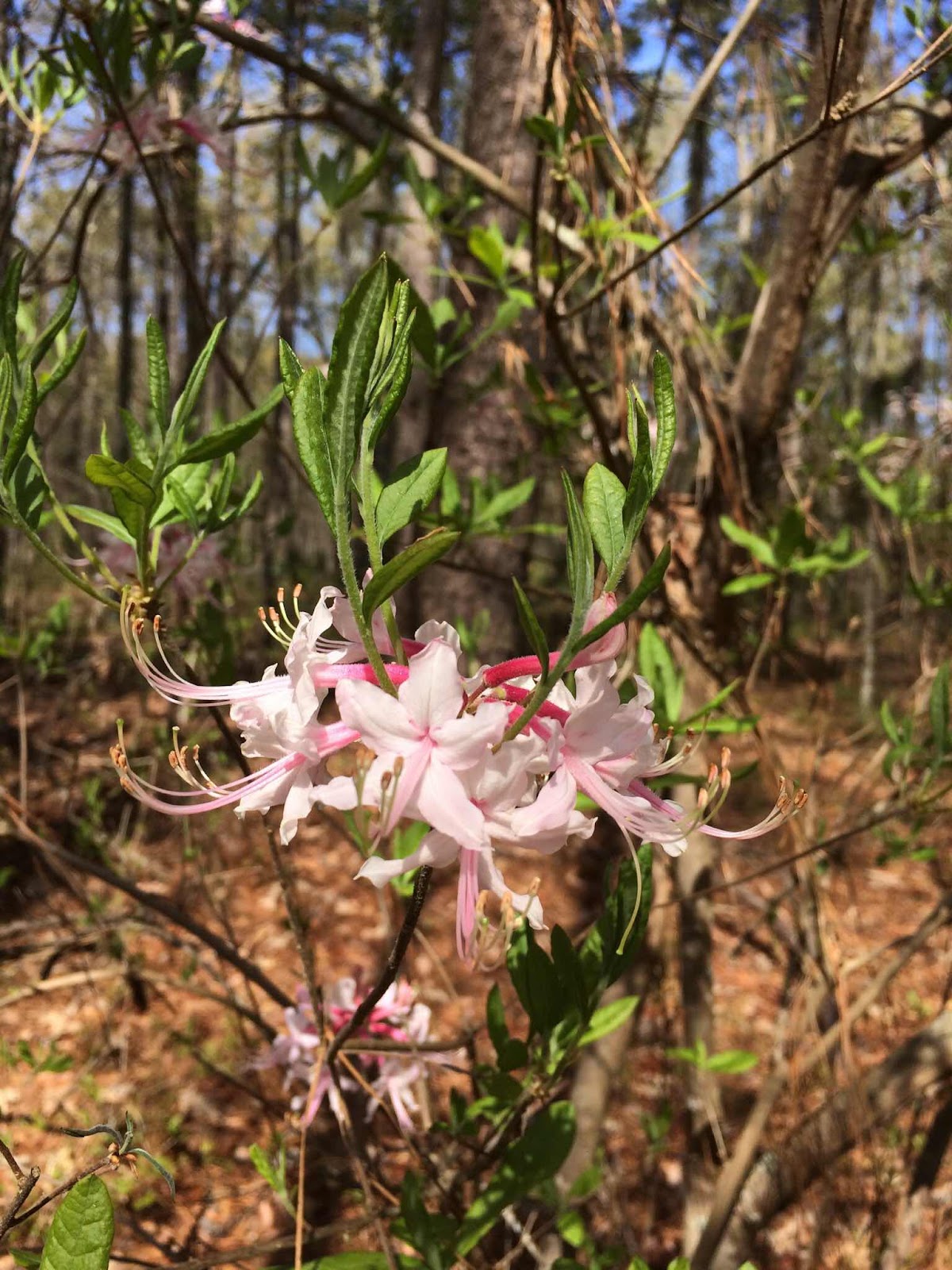
Much more dramatic than ours are the wild azaleas from a woodland hike on the Santee National Wildlife Refuge. Unlike the Asian cultivars, the native shrubs’ flower cluster is huge, bigger than my two hands together. They grow in the understudy of the tall trees on scrawny bushes and are so delicate and dramatic when you happen upon one.


... acres and acres of unplowed cotton fields covered with blankets of red sorrel. It’s a pretty sight but sorrel is a noxious weed that invades soil depleted of nitrogen by the heavy cotton crops.
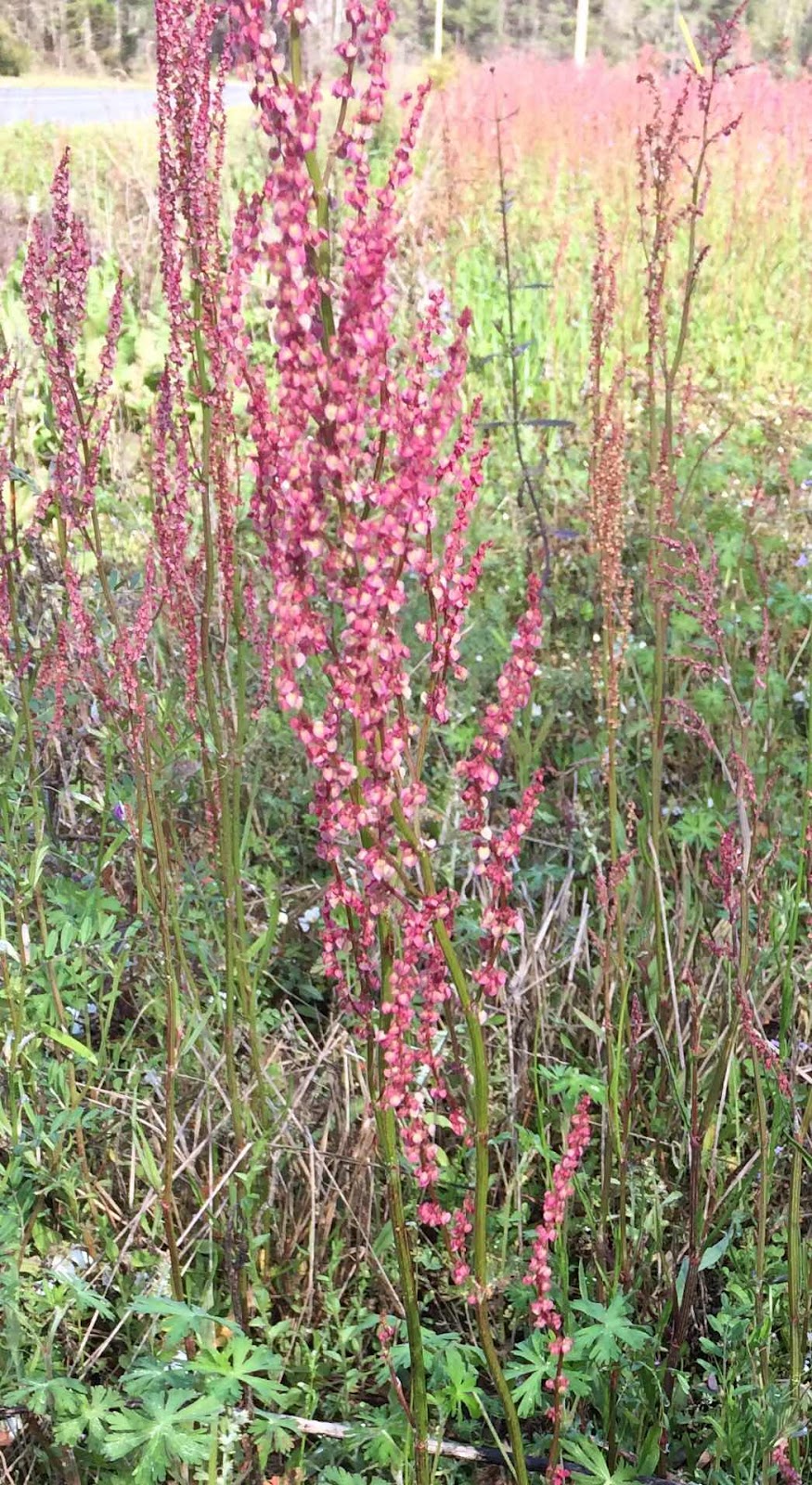
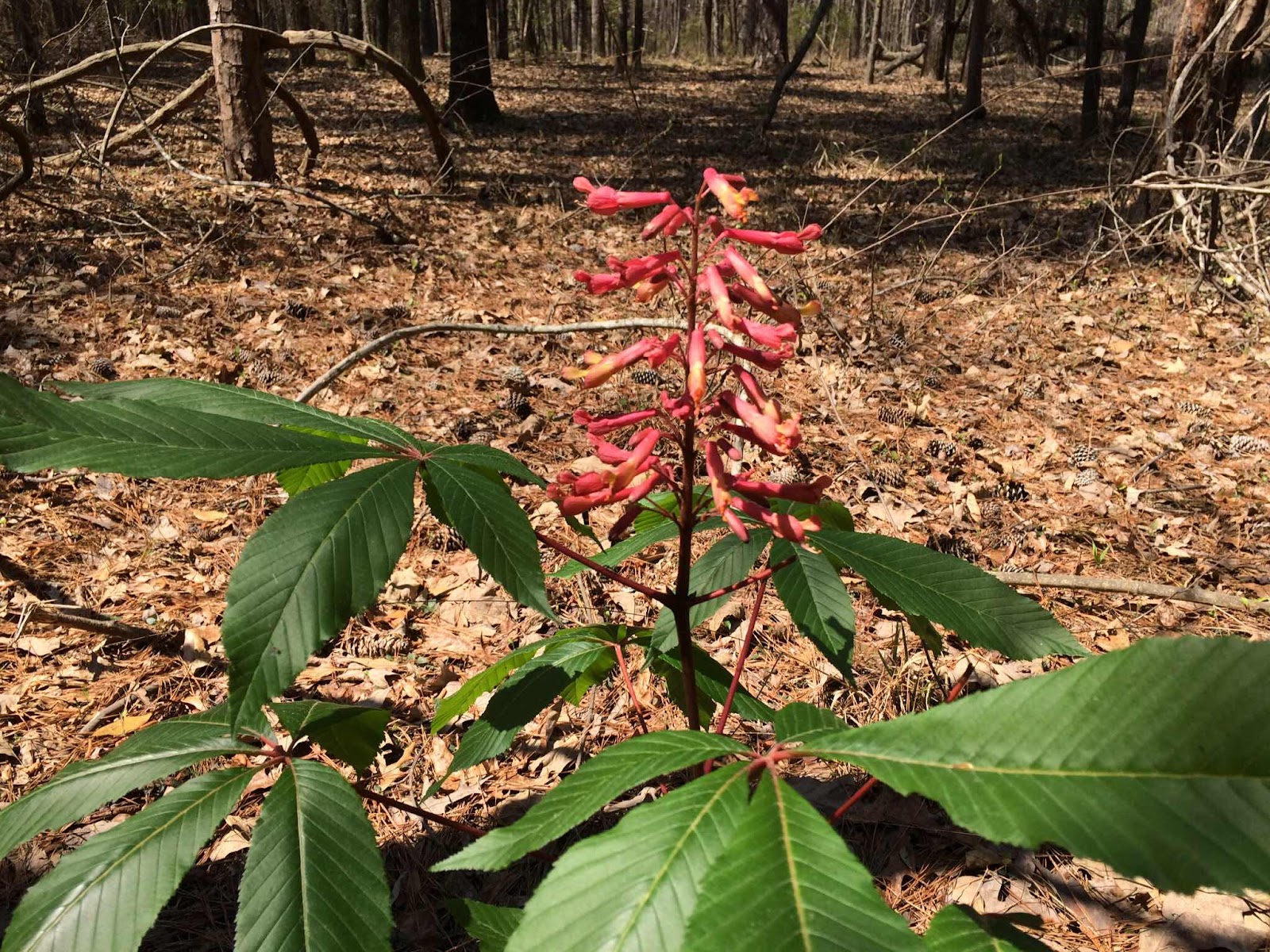
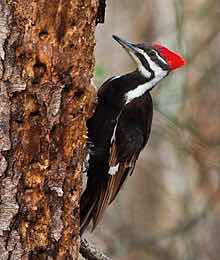

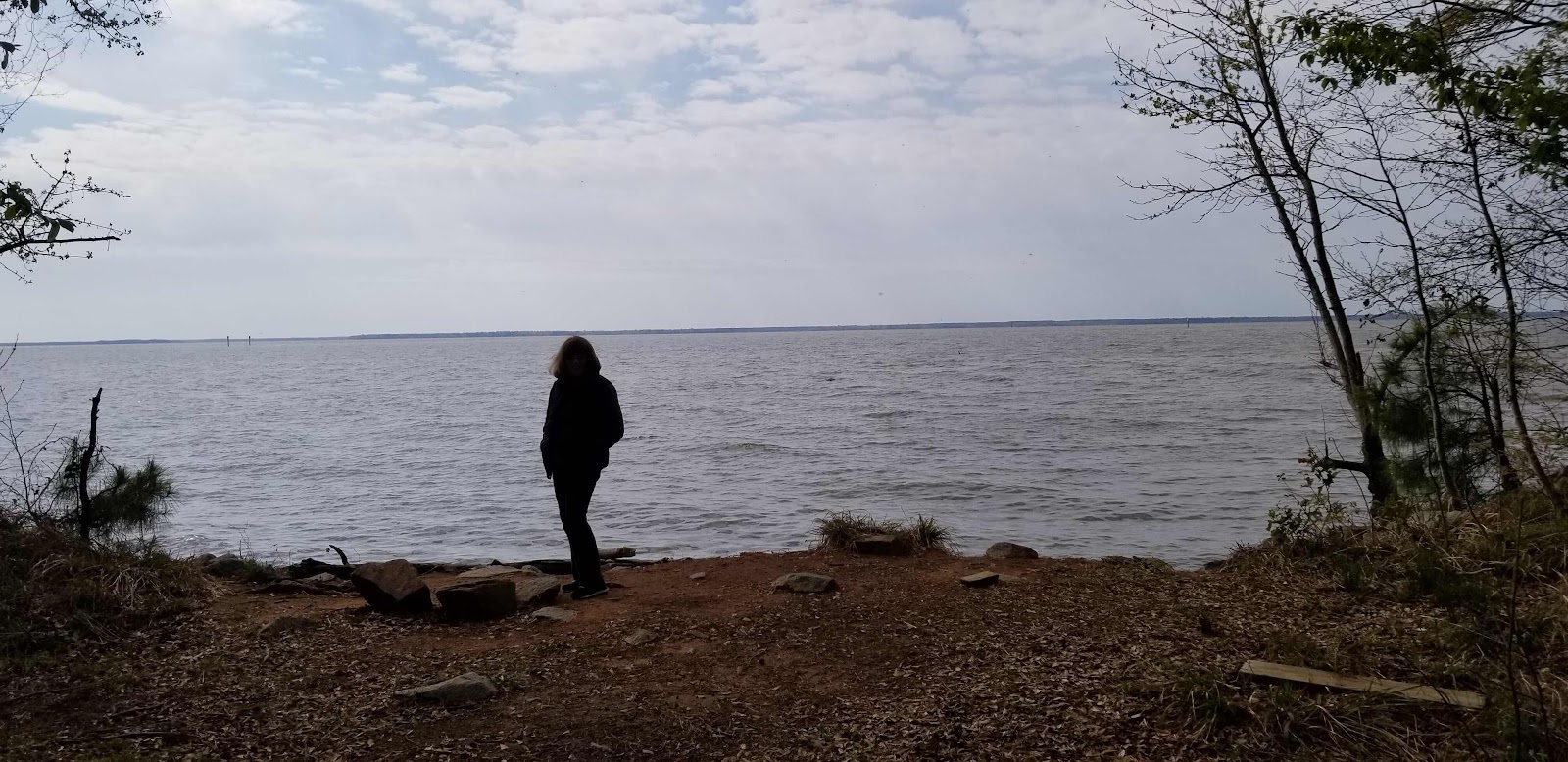
So much beauty out there in the world when everything is new in the spring. I hope you have a chance to get out there and smell the flowers and feast your eyes on some nature today.
We have had company, the garden is flourishing with tomato plants, herbs and kale, and I have begun a course of physical therapy which, with travel to and from, takes most of three mornings a week. Before that started we hurried to get in a couple more adventures.
Here is a glimpse of our backyard. It’s been a fabulous spring for flowers and three sides of our yard are completely lined with azaleas.
We have several colors, ranging from this intense purple to red to the most delicate pink.
But we haven’t only been enjoying the flowers at home. There are so many to see everywhere!
Much more dramatic than ours are the wild azaleas from a woodland hike on the Santee National Wildlife Refuge. Unlike the Asian cultivars, the native shrubs’ flower cluster is huge, bigger than my two hands together. They grow in the understudy of the tall trees on scrawny bushes and are so delicate and dramatic when you happen upon one.
On any drive in the countryside right now, as soon as you get a few miles from the coast you see these seas of red,
... acres and acres of unplowed cotton fields covered with blankets of red sorrel. It’s a pretty sight but sorrel is a noxious weed that invades soil depleted of nitrogen by the heavy cotton crops.
Another dramatic native spring flower was blooming right behind our campsite one day, the red buckeye. Its nickname is the Firecracker Plant.
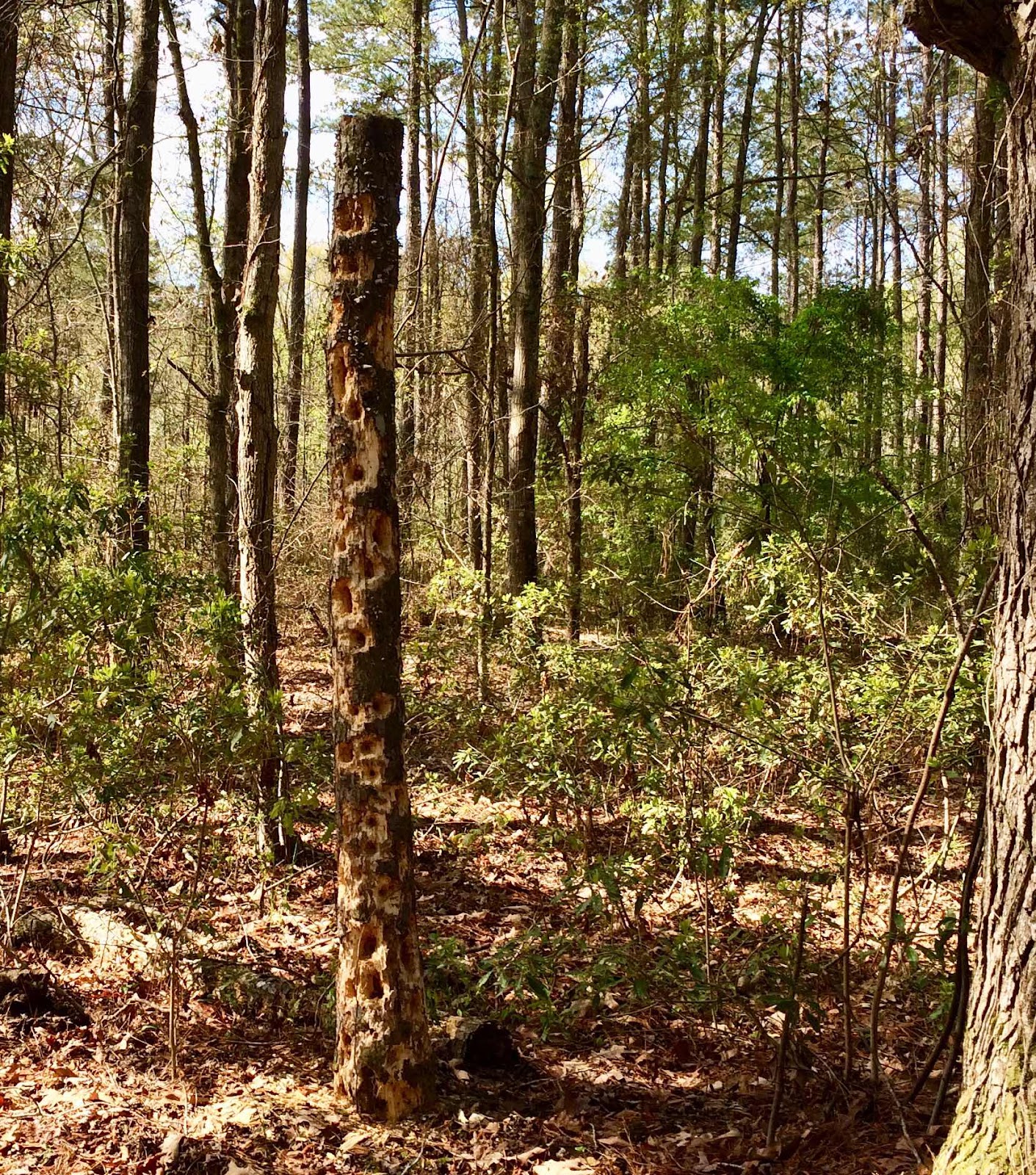
On another walk, I spotted this well-pecked woodpecker tree. As you can see, the holes go right down to the ground at the base, which confused me as to what woodpecker had been so busy here.
On another walk, I spotted this well-pecked woodpecker tree. As you can see, the holes go right down to the ground at the base, which confused me as to what woodpecker had been so busy here.
By the shape of the holes, I thought it should be this guy, a pileated woodpecker.
But pileated woodpeckers are 18 or 19 inches tall! How could he
make those holes all the way down to the base of the tree?
Well, I checked with my favorite birding blogger, David Gascoigne, Travels With Birds
and he assured me it was indeed the work of a pileated woodpecker.
(If you want to enjoy some gorgeous photos of birds, click above on the link for his blog. It’s awesome!)
I’m still wondering how a pileated could peck those lowest holes, though.
So much beauty out there in the world when everything is new in the spring. I hope you have a chance to get out there and smell the flowers and feast your eyes on some nature today.
Monday, April 1, 2019
Trying to Imagine War
On our recent camping trip, we visited the site of the Revolutionary War Battle of Eutaw Springs (September, 1781).
I don’t care to glorify war or to honor entities who cannot find a civilized way to settle conflict. I do have a heart for the young men (and more recently women) who out of honestly held beliefs or desperate situations are the ones to lay down their lives on the front lines of battles. Wars should be remembered for them, and for lessons in peace gleaned from wars’ folly.
I thought i would write a few lines about what happened that autumn day at Eutaw Springs, but it’s a litany of boring dates and names of leaders who dragged their troops into death, maiming, and heartbreak. Not really worth repeating. As a matter of fact, both sides — the British and the Americans — even claimed to have won this, the last major engagement in the war in the Carolinas.
British General Alexander Stewart's letter to his commander states,
“With particular satisfaction I have the honour to inform your lordship, that on the 8th instant I was attacked by the rebel General Greene, with all the force he could collect in this province and North Carolina, and after an obstinate engagement, which lasted near two hours, I totally defeated him, and took two six pounders."
American General Nathanael Greene's letter to his commander states,
“By far the most obstinate fight I ever saw. Victory was ours, and had it not been for one of those little incidents which frequently happen in the progress of war, we should have taken the whole British Army."
On this quiet, beautiful river bank, miles and miles from anywhere, four thousand men from two armies met in brutal battle. They blew each other apart from close range with muskets and canons for three hours and finished off the job with sabers and bayonets.
Heavy rain prevented continuation of the fighting, and having lost a third of his men, Stewart marched back to British-held Charleston.
In the end 500 Americans and 700 British lay dead in this bloody clearing, with many more wounded.
We stood at the foot of trees weighted down with purple wisteria, no sounds but the birds, no odor but the floral perfume, and tried to imagine the carnage that happened here.
Subscribe to:
Comments (Atom)